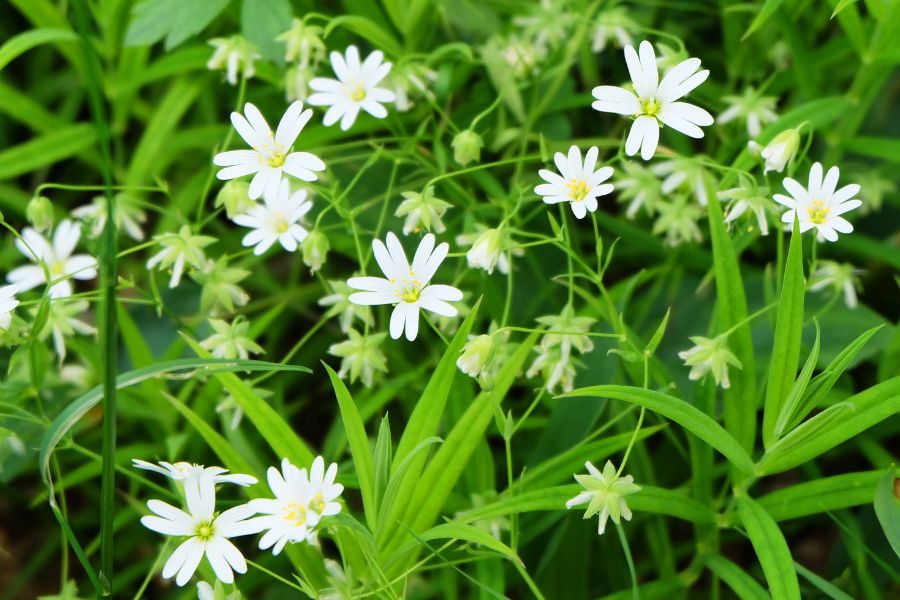We get lost in the woods. It is something that people just tend to do. Between 1992 and 2007 the National Parks services recorded just over 65,000 instances of search and rescue. Most of these were people lost in the woods.
Most people who get lost are found. About 3% of those who go missing are never found again. It’s true that our search and rescue crews are very effective. Still, sometimes days and weeks go by before those people are found.
Could you survive in the woods for a week? What would you eat? I do a lot of foraging but depending on location and time of the year, it could be a real struggle.
Here is my list of wilderness emergency foods that I would turn to if I were lost in the woods.
A Quick Reminder
Before we get into the specifics about where and how to find these plants and mushrooms, we want to be clear that before ingesting any wild plant or mushroom, it should be identified with 100% certainty as edible by someone qualified and experienced in mushroom and plant identification, such as a professional mycologist or an expert forager. Misidentification can lead to serious illness or death.
All plants and mushrooms have the potential to cause severe adverse reactions in certain individuals, even death. If you are consuming wild foragables, it is crucial to cook them thoroughly and properly and only eat a small portion to test for personal tolerance. Some people may have allergies or sensitivities to specific mushrooms and plants, even if they are considered safe for others.
The information provided in this article is for general informational and educational purposes only. Foraging involves inherent risks.
Berries and Fruits
In most parts of the country, berries and fruits are available. Some seasons will be better than others but if it’s late spring, summer, or fall, chances are there are some fruits and berries around.
The sugar in those berries will give you energy.
Raspberry and Blackberry

These fruits grow on thorny canes that sprout directly out of the ground. They have distinct leaves that make it easy to identify them along with the fruits and thorns.
One of the reasons these are great wilderness survival food in an emergency is because they are often found in bunches or brambles. In other words, you aren’t just gonna happen upon one fruit. You can sit near these bushes and get your fill on these delicious fruits.
If you have a container for them, then you can take some with you as you attempt to find your way back to society.
Mulberry

The mulberry is one of the earliest fruits to ripen. It might be a savior if you find yourself lost on a hike in late spring and early summer.
It’s gotta be the tree with the strangest leaves on the planet because there are four distinct leaf shapes that grow on the same tree. When there is no fruit on the tree the leaves are the very best way to identify it.
I start by looking for the mitten-shaped leaf and then start looking for others. There is also a very ornate triangular leaf on this tree, too.
The fruit is deep purple or black and fragrant. You really cannot miss the mulberries when they are ripe.
Pawpaw
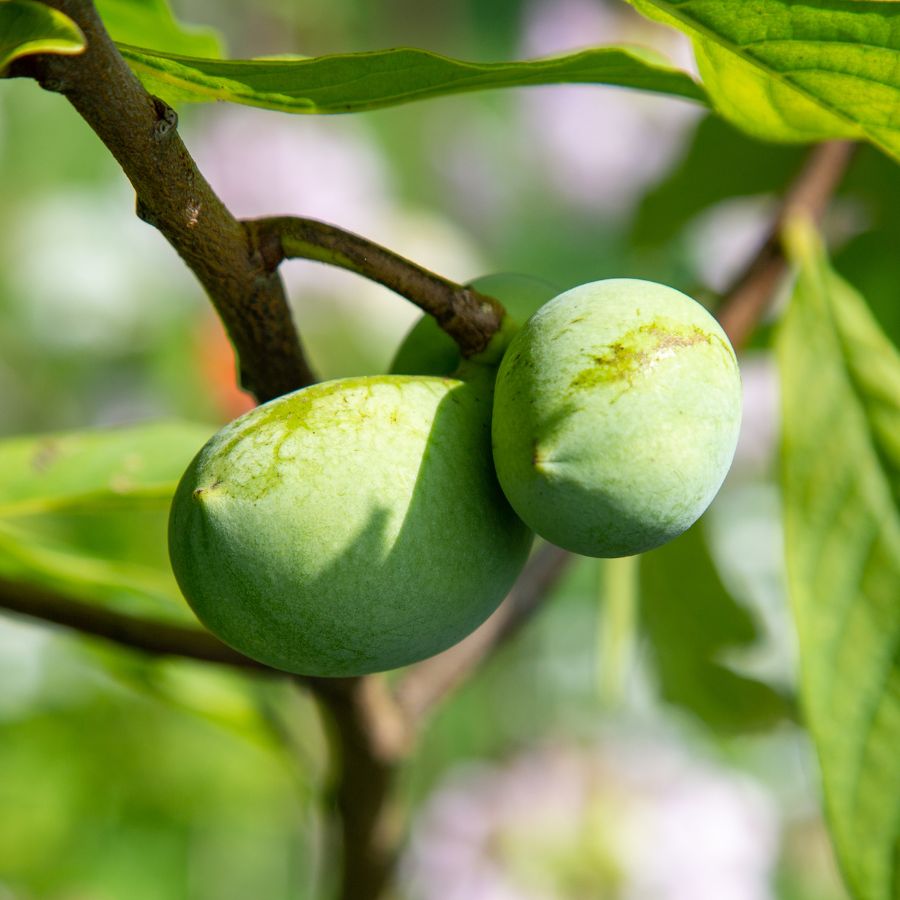
Most people don’t realize that there is a tropical fruit growing down by the water in 25 US states with a hardiness of zone 5 to 8. The pawpaw is found from northern Florida to southern Ontario.
It is a creamy fruit that matures at the end of summer. Mature trees drop lots of fruit each year. This is one of the best treats for the forager, period. They would be a very substantial source of calories if you had nothing else to eat.
Look for the large open hand-like leaves. The bark is smooth and if they are ripe, you will find strange smooth-skinned fruits as large as 5 inches long on the ground. Shake the trees and watch out for your head as these heavy fruits will come falling when ripe.
Mayapple
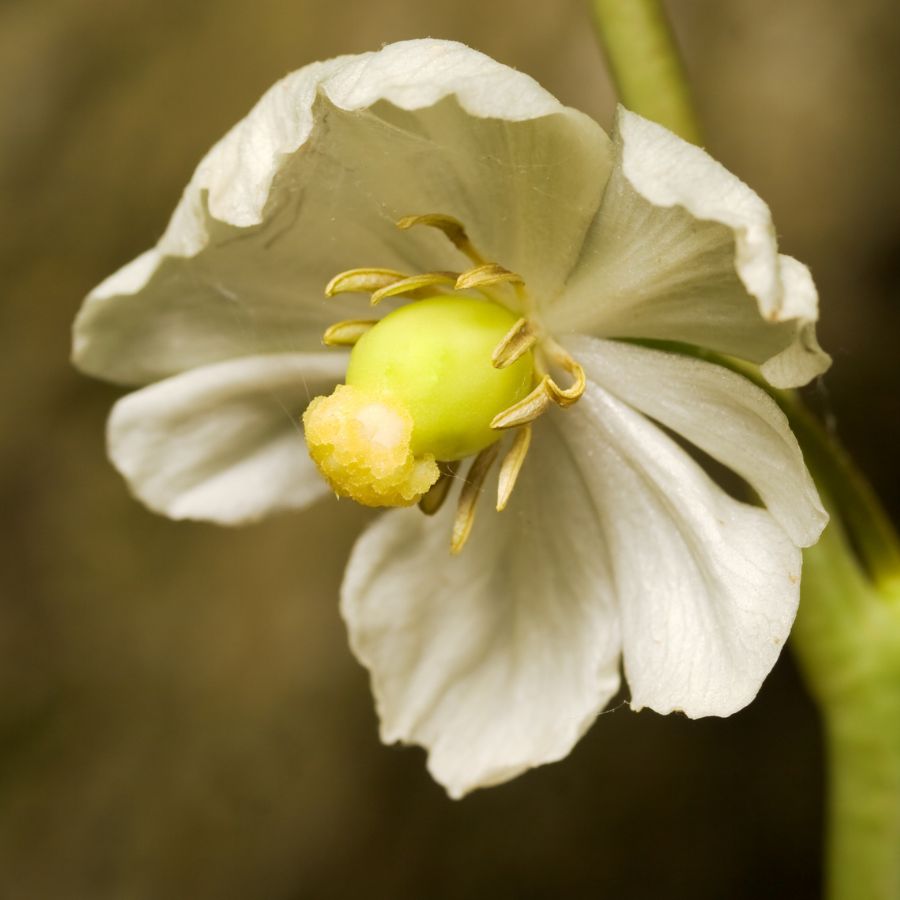
The Mayapple is the perfect example of wilderness survival food. This is hardly my favorite wild fruit, but it is edible and if you were hungry, you’d be thrilled to find these strange low-lying plants.
The mayapple looks like a strange miniature tree on the forest floor. It puts off an umbrella-looking set of leaves each notched at the tips. The stems are thin and green.
These plants grow off a central root in a colony so you will never find just one of them. Some of the plants put off a little white flower that hides under the canopy. You may have to literally get down on your knees to see it.
It has five white petals and by the time May rolls around, the flower will change into a small ovate green fruit about the size and shape of a quail egg.
The fruit is white inside and in my experience has been very bland and a little nutty. However, if you are looking for calories and you find a colony of mayapple you will have something to munch on.
Roots and Tubers
Roots and tubers are starchy. They are the powerhouse of the plant and therefore have a lot more to offer than leaves, stems, and flowers. These would be a lifesaver in a wilderness emergency.
Cattails
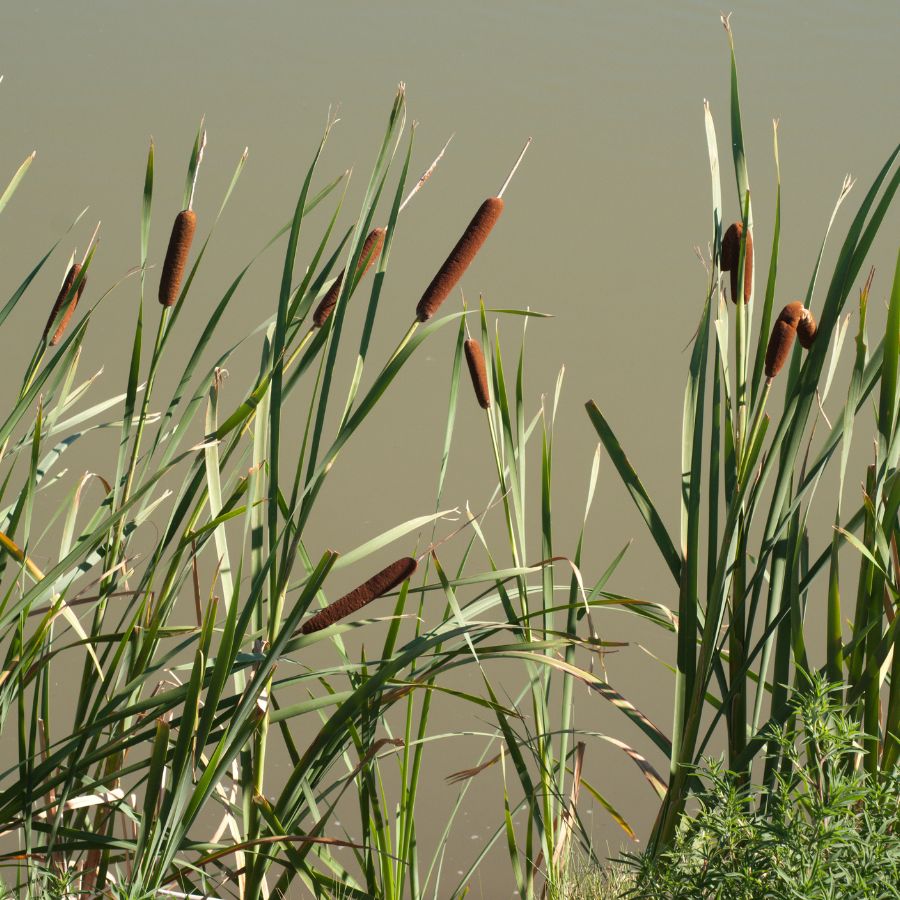
I was out fishing this weekend and saw the spring shoots of cattail starting to pop up out of the water. The shoots are good eating, but we are here to talk about starchy roots.
The roots of cattail are carbohydrate-based and have a lot of nutrition.
Find the young shoots and pull them gently but firmly and in most cases the bulbous root will come with it. I rinse the roots thoroughly and roast them before eating. These roots live in water with lots of bacteria, so I think cooking these is key.
Dandelions

You might not run into a lot of dandelions if you are lost in the deep woods, but if there is a field, you have a boon! The dandelion is very easy to identify, and it has a very interesting root. Most people know it as the root that can be roasted and ground into something like coffee, without caffeine.
That’s one way you can eat it. You can also boil the roots and eat them straight up. They are a little bitter but are filled with good nutrition. Boiling will be much easier in a wilderness emergency, assuming you have a metal container of some kind.
Chicory Root
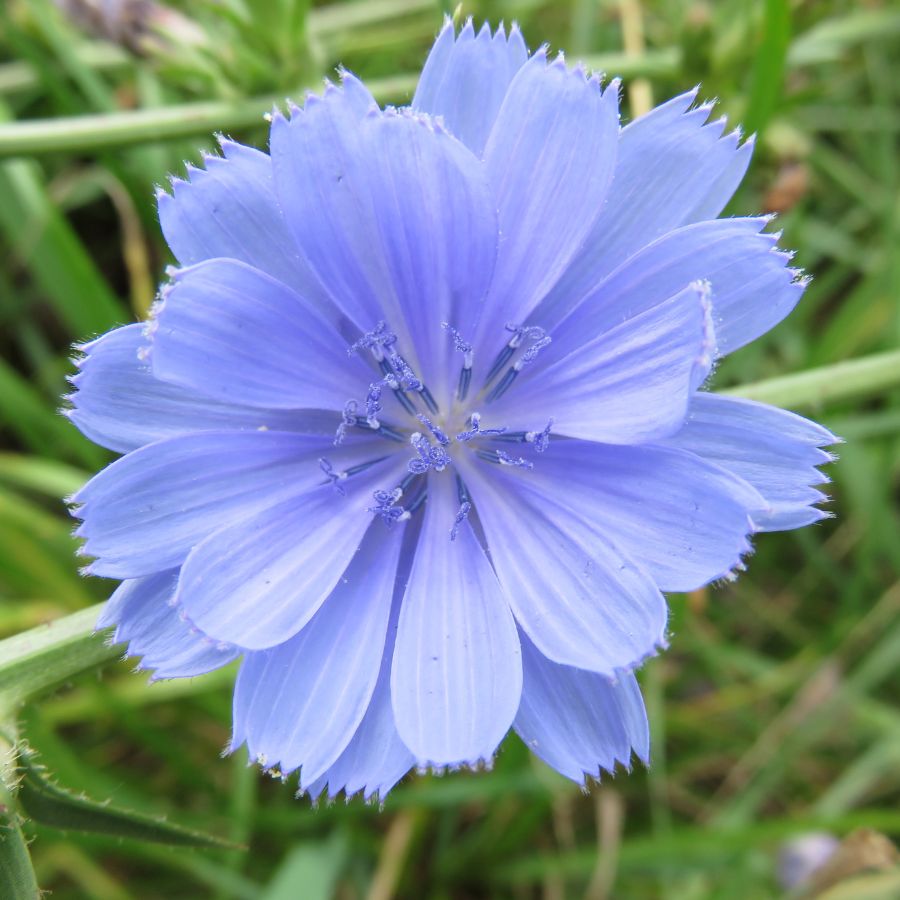
If you can recognize the long dagger-shaped leaves and the beautiful blue flower of chicory, you will have another tuber to eat.
The root is full of fiber and vitamins. I think it’s a bit too bitter to be enjoyed on its own. It should be boiled before eating and added to other root vegetables. However, in an emergency, you are going to want those vitamins and minerals hidden in the root.
Kudzu
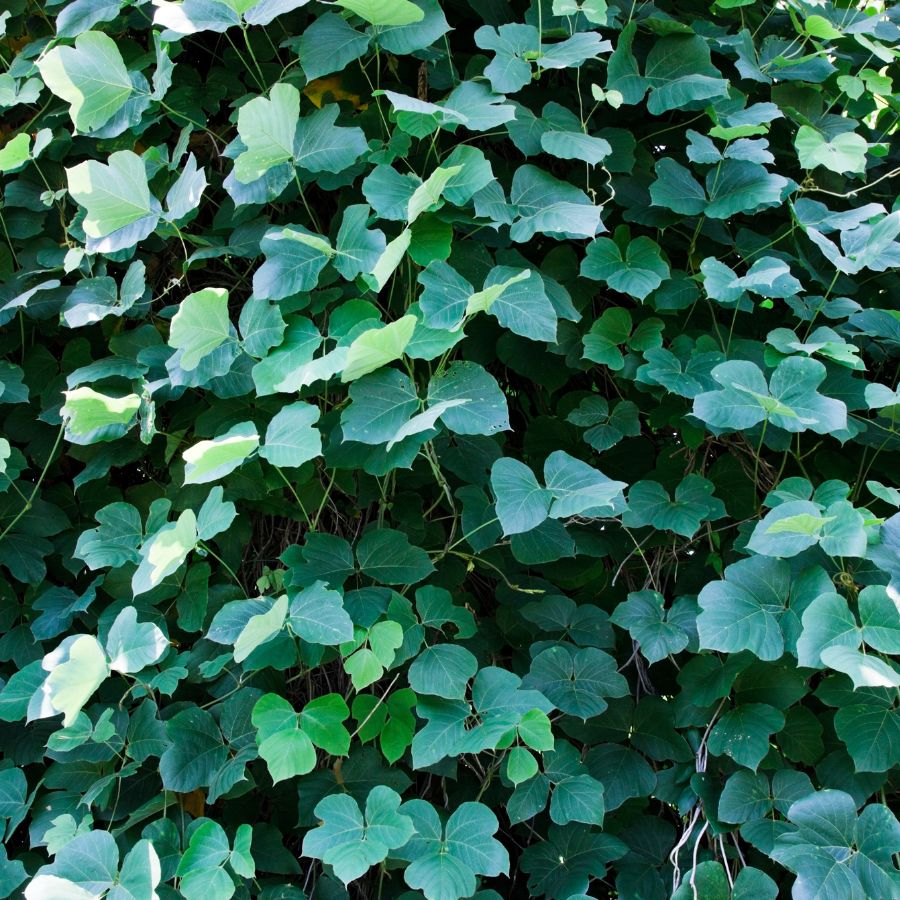
Kudzu is so hyperinvasive that it just keeps coming and coming. You couldn’t eat it all if you had to. It has been dubbed “the vine that ate the South” because in places like North Carolina, you can see massive areas of forest completely draped in kudzu.
For the environment, this might seem alarming. But for the forager, it basically creates a perpetual resource. The entire plant is edible from root to blossoms.
The starch kudzu root is a perfect wilderness emergency food. It is a staple vegetable in Japan. The root systems of kudzu are expansive, so if you find some, you will have plenty to harvest.
Leaves and Flowers
Grazing is a great method for keeping food in your belly when you are lost. You can grab flowers and leaves that you recognize as you try to find your way back to civilization. These can be eaten later when you stop for a breather or along your way.
Dandelion

As one of the easiest wild edibles to identify, I think this should always be top of mind. If you know the leaves you can find these things at all times of the year. They won’t have a big yellow flower head, but they will be out there.
Since you can eat the leaves, the flowers, and the roots, I think this is a great one for any wilderness emergency.
Yellow Dock or Curly Dock

Curly Dock grows in the spring and beyond but it will emerge very early in the spring season. It’s one of the earliest spring plants, and that is why I think it is so valuable to know. If you are in an emergency situation in most seasons, you can find this.
I like the young leaves the best. These are like tart spinach and can be picked while you are hiking and eating as is. It grows low to the ground so you may want to give it a rinse.
Chickweed

I get excited when I find chickweed because it grows in mats. You never find one plant; you find a lot. The thin, long stems are covered with small leaves, and the tops with small white flowers.
The plant is entirely edible and is a great snack for a wilderness emergency not just because it’s food, but because it contains lots of moisture. If you find chickweed, then you should stick some in a small bag or even a jacket pocket and treat it like a snack.
Look for small opposite almost heart-shaped leaves. It’s not a tough plant to ID but if you are concerned, the tiny white flowers have 10 small thin petals.
Nuts and Seeds
Eating nuts and seeds is different than leaves and tubers. They have more protein than most foraged foods. One of the hardest things to get your hands on when you are lost is protein.
Acorns

Acorns are so incredibly tannic and bitter that you could actually throw up from eating them straight out of the shell. Not the outcome you are after.
Instead, you need to boil them in a couple of changes of water. If you are lost, this could serve many purposes. The fire can be used to keep you warm. The boiled acorns can be eaten. You can also boil water from a creek or pond, after boiling the acorns, to sanitize it and make it safe to drink.
Boiling the acorns in a couple changes of water leeches the tannins into the water. It makes the acorn more palatable. If you are lost in the woods, you will not be processing these any further but just eating them straight away.
Hazelnuts

If the hazelnuts are in season, they are a great nut for eating in a wilderness emergency. Most wild hazelnuts are much smaller than the ones you purchase. However, they are still filled with incredible nutrition.
Not to mention they are rich and flavorful.
Look for hazelnut shrubs by looking for the wide birch-like leaves that run up and down thin branches. The clusters of nuts are covered by a green or brown husk. If the husk is brown, then you should have a delicious nut inside.
American Lotus Seed

A strange and beautiful water-growing plant, the American lotus produces edible seeds that can be eaten raw or roasted. Now, you gotta get in the water to harvest these effectively so keep that in mind.
Don’t exchange hunger for hypothermia in a survival situation. Only get in the water if you know it will not be a chilly night or if your fire skills are up to par to keep you warm all night.
The beautiful white flowers grow from a thin green stem protruding from the water. The petals of the flower are delicate and rounded. They have always reminded me of a thumb.
At the flower’s center, a yellow “fruit” with a flat top will begin to form. It looks for angular and strange for something made in nature. By the end of the summer, large seeds will be easily visible with this structure. They will be brown or even black and can be removed and eaten.
The American lotus seeds can be roasted, too.
Be careful of the American Lily which is a lookalike of the lotus. The flowers are pointed, and the lily pad has a large wedge in it like a whole pizza missing a slice.
Jewelweed
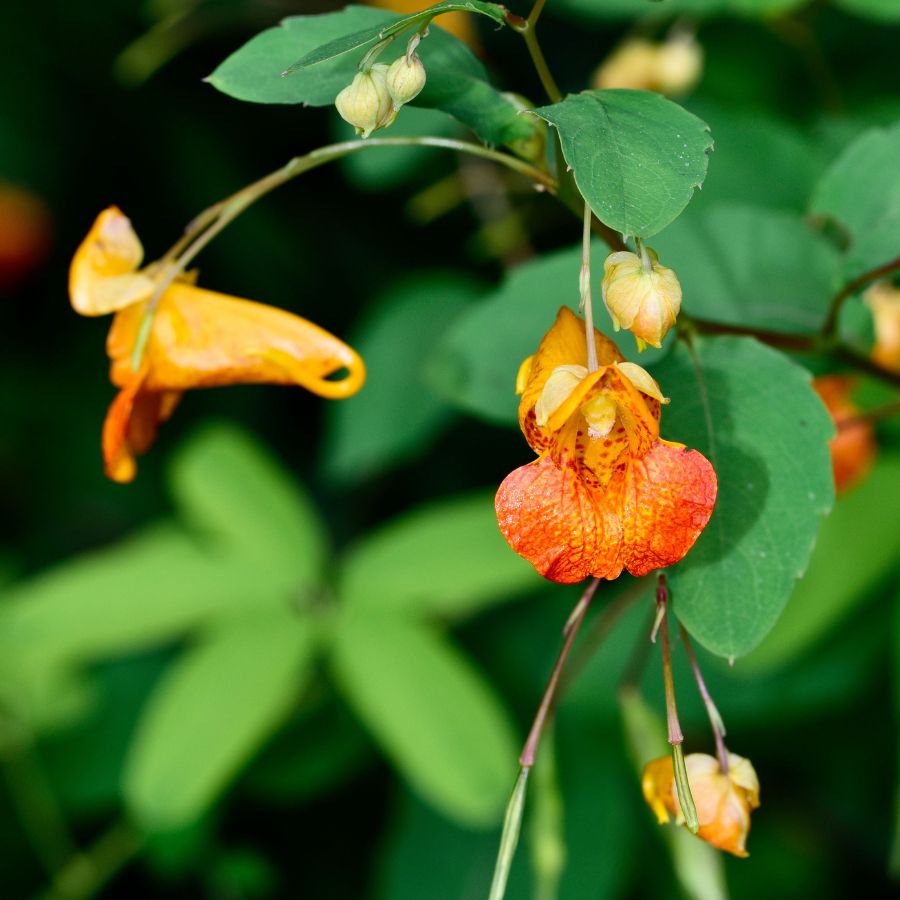
Also known as spotted touch me not, I learned that this plant is a remedy for poison ivy. These plants produce exploding seed pods! It’s pretty cool. The mature seed pods will sit just beneath the yellow and orange flower.
When you touch it the seed pod will open up and shower its seeds on the ground. If you put a hand underneath it then you will catch some.
Jewelweed seeds would not be a food I would forage because it is very tedious. However, if you are lost and starving this is going to be a very easy food with lots of nutrients that you can collect. The seeds are tiny but it’s better than nothing!
Jewelweed grows together in bunches, too. If you have found one plant, there are likely many others nearby.
One Final Disclaimer
The information provided in this article is for general informational and educational purposes only. Foraging for wild plants and mushrooms involves inherent risks. Some wild plants and mushrooms are toxic and can be easily mistaken for edible varieties.
Before ingesting anything, it should be identified with 100% certainty as edible by someone qualified and experienced in mushroom and plant identification, such as a professional mycologist or an expert forager. Misidentification can lead to serious illness or death.
All mushrooms and plants have the potential to cause severe adverse reactions in certain individuals, even death. If you are consuming foraged items, it is crucial to cook them thoroughly and properly and only eat a small portion to test for personal tolerance. Some people may have allergies or sensitivities to specific mushrooms and plants, even if they are considered safe for others.
Foraged items should always be fully cooked with proper instructions to ensure they are safe to eat. Many wild mushrooms and plants contain toxins and compounds that can be harmful if ingested.

